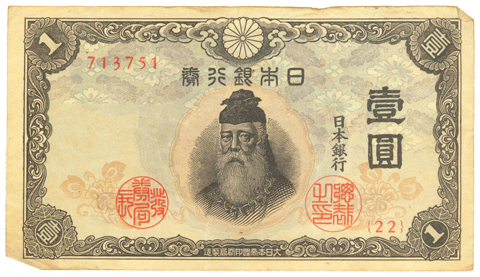Japanese currency has a history covering the period from the 8th century to the present. After the traditional usage of rice as currency medium, Japan's currency was characterized by an early adoption of currency systems and designs from mainland China, before developing into an original system of its own.
Before the advent of the 7–8th century CE, Japan used commodity money for its exchanges. It generally consisted of material that was compact, easily transportable and had a widely recognized value. Commodity money was a great improvement over simple barter, in which commodities were simply exchanged against others. Ideally, commodity money had to be widely accepted, easily portable and storable, and easily combined and divided in order to correspond to different values. The main items of commodity money in Japan were arrowheads, rice grains and gold powder, as well as hemp cloth.
This contrasted somewhat with countries like China, where one of the most important item of commodity money came from the Southern seas: shells.Since then however, the shell has become a symbol for money in many Chinese and Japanese ideograms.
Japanese Currency
Japanese Currency
Japanese Currency
Japanese Currency
Japanese Currency
Japanese Currency
Japanese Currency
Japanese Currency
Japanese Currency
Japanese Currency
Japan National Bank and Japanese currency Museum
Japanese Currency: World War 2









No comments:
Post a Comment